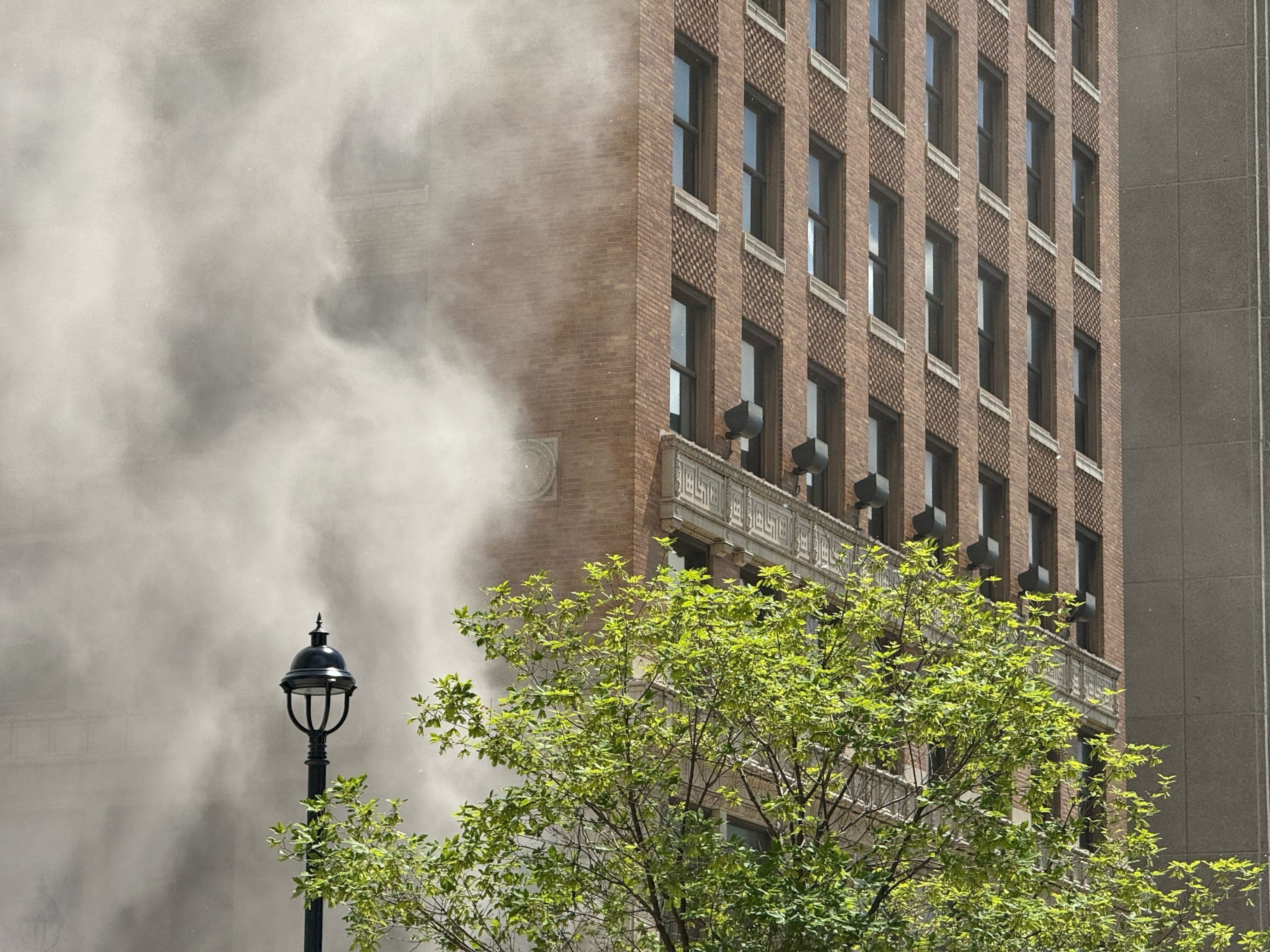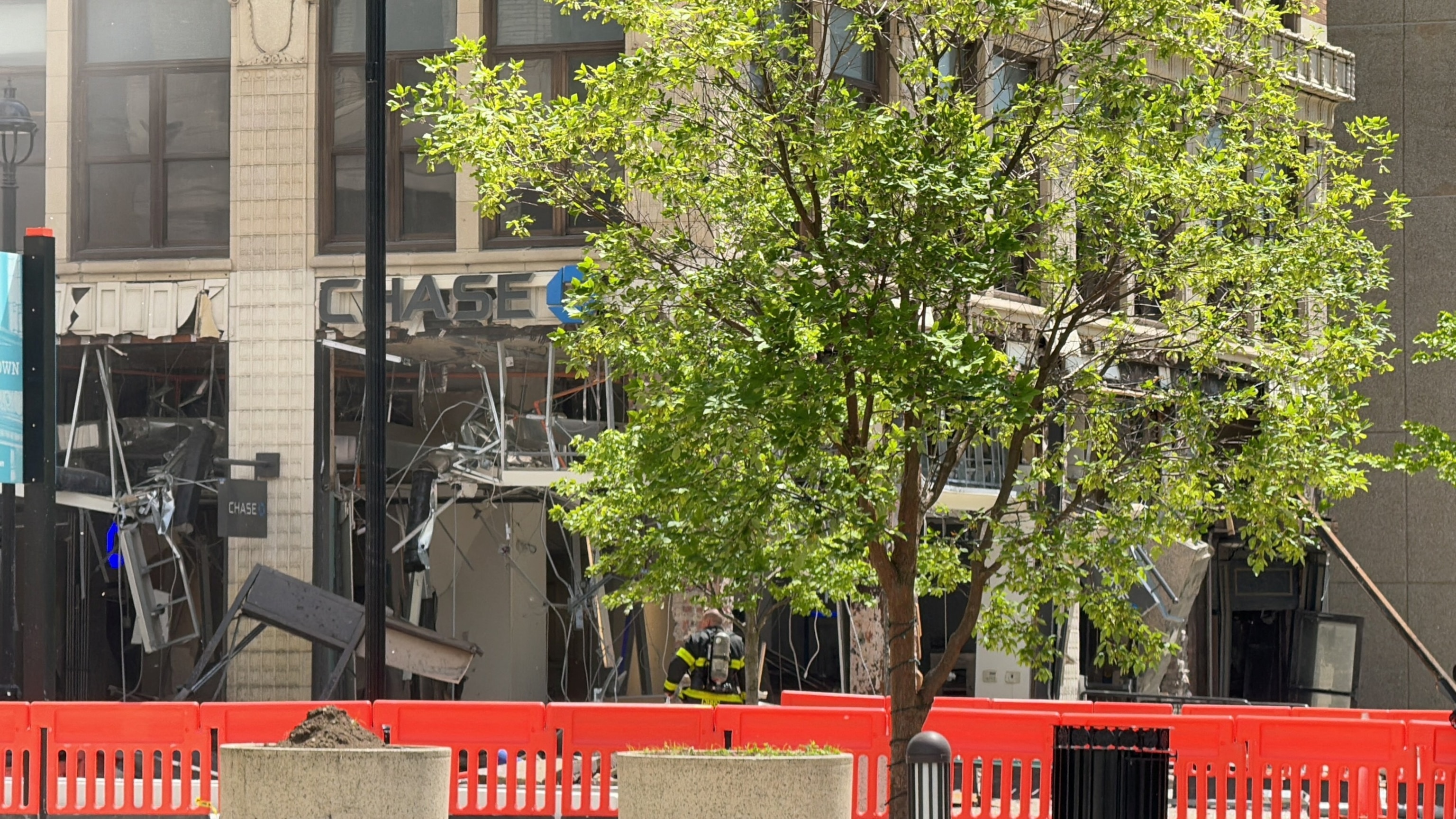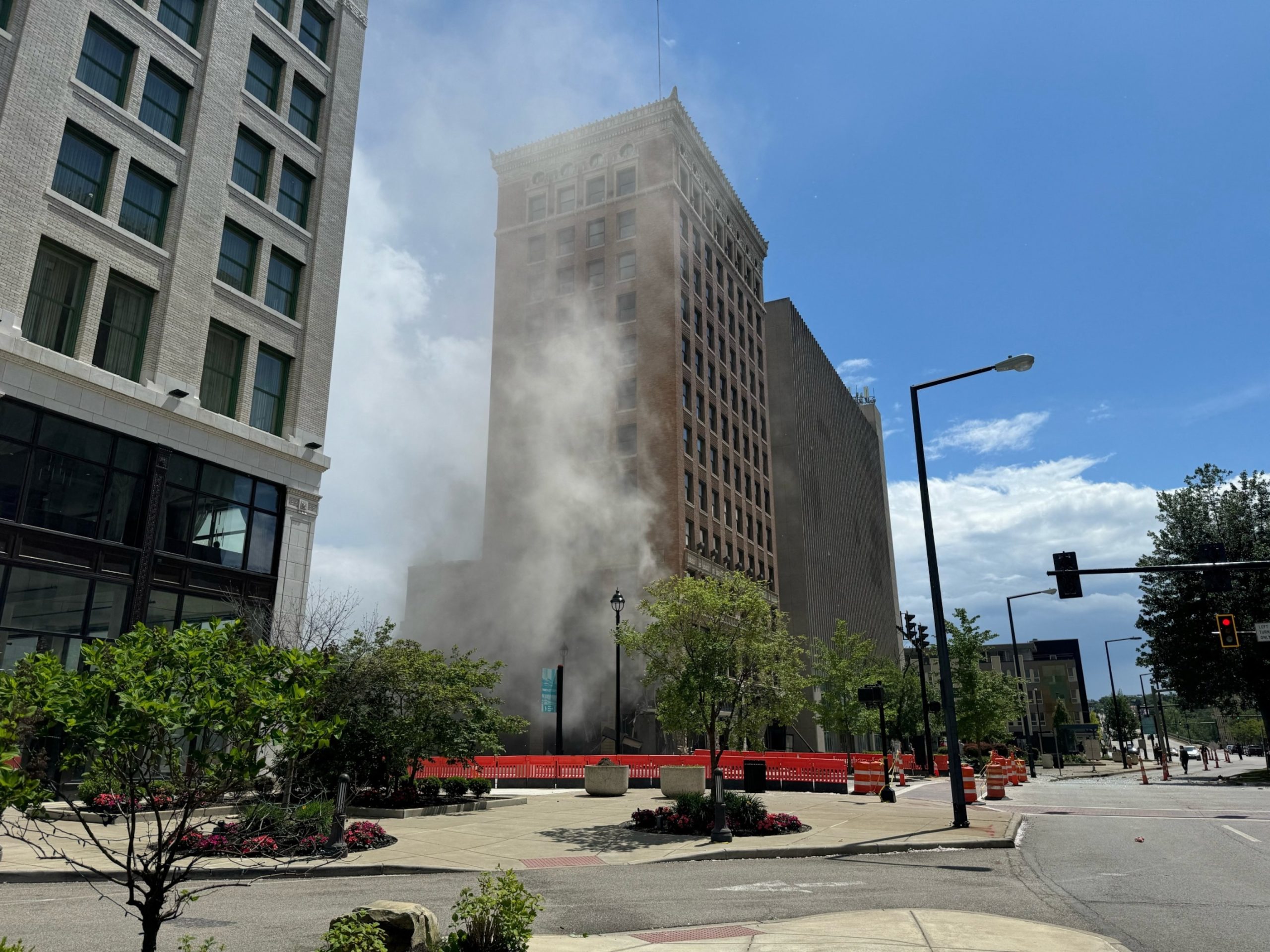The National Transportation Safety Board said a cut to an inactive but still pressurized gas line will be a central focus of their investigation into what caused a devastating explosion that rocked downtown Youngstown, Ohio.
The blast occurred near Central Square on Tuesday afternoon and impacted a building that contains a Chase bank and apartments. One person was killed and seven others injured in the explosion, officials said.
The NTSB sent a team of pipeline and hazardous materials investigators to Youngstown on Wednesday to investigate the natural gas explosion.

Smoke rises from a JPMorgan Chase & Co. building following an explosion, May 28, 2024, in Youngstown, Ohio.
Ron Flaviano via Reuters
The preliminary investigation suggests that work crews were in the basement of the building to reportedly clear out old utility infrastructure prior to the explosion, according to NTSB board member Tom Chapman.
“A possible third-party cut to the pressurized service line is a central focus of our investigation to determine the cause of the gas release and subsequent explosion,” Chapman told reporters during a press briefing Thursday.

Smoke rises from a JPMorgan Chase & Co. building following an explosion, May 28, 2024, in Youngstown, Ohio.
Ron Flaviano via Reuters
Following the explosion, the Public Utilities Commission of Ohio and Enbridge Gas, the service provider for the area, gained access to the basement and discovered a cut to the pressurized but inactive below-ground service line, Chapman said.
Part of the investigation “will determine exactly why that apparently abandoned service line was still pressurized,” Chapman said.
Chapman said there is no evidence to suggest anything “nefarious” in the incident.
Related Stories
“Part of what we’ll be looking at is what are the proper procedures and were those proper procedures followed,” he said.

A firefighter works at the scene of a damaged JPMorgan Chase & Co. building following an explosion, May 28, 2024, in Youngstown, Ohio.
Ron Flaviano via Reuters
The NTSB’s investigation is expected to last approximately one week, with a preliminary report anticipated in about 30 days. Final reports typically take between 12 and 24 months to complete.
Chapman called the damage in the explosion “stunning.”
“The damage to the building is devastating,” he said.
The floor collapsed into the basement, which was flooded, officials said.
The body of a man who was an employee of the bank — identified as Akil Drake — was recovered from the basement early Wednesday morning, officials said.
The building and a neighboring hotel have closed and streets in the surrounding area are shut off to traffic indefinitely due to the potential for structural collapse, authorities said.
A gas line cut at the center of an investigation by the National Transportation Safety Board (NTSB) following a deadly explosion in Ohio has raised concerns about the safety of natural gas pipelines in the United States.
The explosion, which occurred in a residential neighborhood in Beaver County, Ohio, resulted in one death and several injuries. The blast was so powerful that it destroyed several homes and caused widespread damage to surrounding properties.
According to preliminary reports from the NTSB, the explosion was caused by a contractor who accidentally cut a gas line while performing excavation work in the area. The contractor was reportedly not aware that there was a gas line in the vicinity, leading to the tragic incident.
This incident has raised questions about the safety protocols and regulations surrounding natural gas pipelines in the United States. Gas pipelines are a crucial part of the country’s infrastructure, transporting natural gas from production sites to distribution points across the country. However, incidents like the one in Ohio highlight the potential dangers associated with these pipelines.
The NTSB is now conducting a thorough investigation into the circumstances surrounding the explosion, including looking into the contractor’s actions leading up to the incident and examining the maintenance and inspection records of the gas line in question. The goal of the investigation is to determine what factors contributed to the explosion and to make recommendations for improving pipeline safety in the future.
In response to the incident, local authorities have urged residents to be vigilant when performing any kind of excavation work near gas lines and to always call 811, the national “Call Before You Dig” hotline, before digging to ensure that they are aware of any underground utilities in the area.
The NTSB’s investigation into the Ohio explosion serves as a reminder of the importance of proper safety measures when dealing with natural gas pipelines. It is crucial that contractors, homeowners, and utility companies all work together to ensure that these pipelines are properly maintained and that proper safety protocols are followed to prevent future tragedies.



